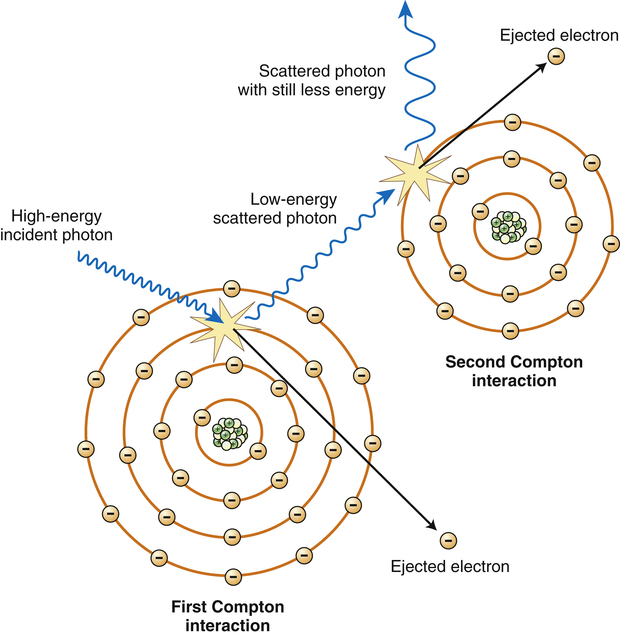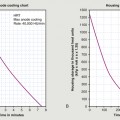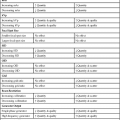• Explain classical interactions, including production, energy, effects on patient dose, and effects on image quality. • Explain Compton interactions, including production, energy, effects on patient dose, and effects on image quality. • Explain photoelectric interactions, including production, energy, effects on patient dose, and effects on image quality. • Explain photodisintegration. • Relate differential absorption to x-ray beam interactions with the human body and image formation. It is helpful for the radiographer to understand the way x-ray photons interact with matter for two important reasons (Figure 7-1). First, it allows the radiographer to minimize the physical effects of x-ray photons on the patient that result in radiation dose and biologic harm. Second, an understanding of x-ray photon–body tissue interaction allows the radiographer to better manipulate how the particular anatomic area of interest appears radiographically. Minimizing harm to the patient and producing a quality radiographic image are both integral to the role and responsibility of the radiographer. X-rays may interact with matter in five different ways, depending on their energy. This chapter discusses all five but keep in mind that only the first three occur within the range of energy used in diagnostic radiography. The chapter concludes with a discussion of differential absorption and other terms related to how the x-ray beam interacts in general with body tissues. Classical interactions are also commonly known as coherent scattering or Thomson scattering. In this scattering event the incident x-ray photon interacts with an orbital electron of a tissue atom and changes direction. In this particular interaction the incident x-ray photon is of a rather low energy (generally less than 10 keV). When such low-energy incident photons interact with tissue atoms, they are not likely to ionize (remove orbital electrons from their shell). Instead, the atom absorbs the energy of this x-ray photon, causing excitation of the atom, and then immediately releases the energy in a new direction (Figure 7-2). Because the energy is reemitted in a new direction, it is now a scatter photon. It is of equal energy to the incident photon but travels in a new direction. Because of its low energy, most classical scatter photons are absorbed in the body through other interactions and do not contribute significantly to the image, but do add slightly to patient dose. Compton scattering occurs throughout the diagnostic range, but generally involves moderate-energy x-ray photons (e.g., 20-40 keV). In this interaction, an incident x-ray photon enters a tissue atom, interacts with an orbital electron (generally a middle- or outer-shell electron), and removes it from its shell. In doing so, the incident photon loses up to one third of its energy and is usually deflected in a new direction (Figure 7-3). This interaction does three things: First, it ionizes the atom, making it unstable. Ionization in the body is significant because the atom is changed and may bond differently to other atoms, potentially causing biological damage. If one of the “middle” orbital shells is involved, then a characteristic cascade (outer-shell electrons filling inner-shell vacancies and emitting x-ray photons) also results, creating characteristic photons just as in the tube target. But here they are called secondary photons. These secondary photons are x-ray photons, but of a rather low-energy variety. Such photons generally contribute only to patient dose. Second, the ejected electron, called a Compton electron or secondary electron, leaves the atom with enough energy to go through interactions of its own in adjacent atoms. The type of interaction the Compton electron undergoes depends on the energy it has and the type of atom it interacts with. Third, the incident photon is deflected in a new direction and is now a Compton scatter photon. It too, has enough energy to go through other interactions in the tissues or exit the patient and interact with the image receptor. The problem with Compton scatter interacting with the image receptor is that it is not following its original path through the body and strikes the image receptor in the wrong area. In so doing, it contributes no useful information to the image and only results in image fog. Because most scattered photons are still directed toward the image receptor and result in image fog, it is desirable to minimize Compton scattering as much as possible.
X-ray Interactions with Matter
Introduction
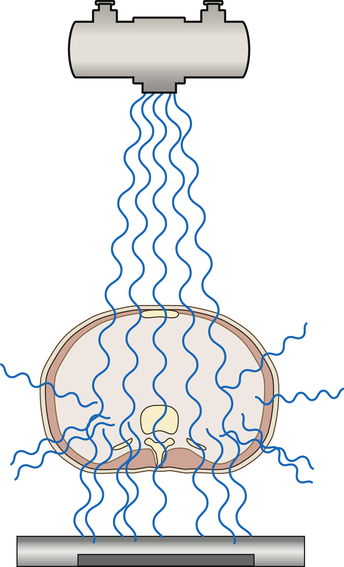
When x-rays interact with the body, some are absorbed, some are scattered, and some penetrate to expose the image receptor.
Classical Interactions
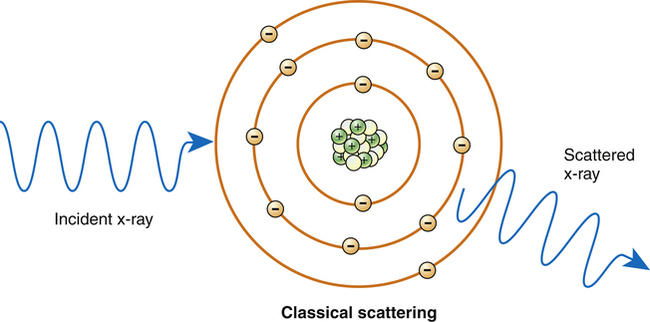
A classical scattering event. Note that no electron is removed; the atom absorbs the energy and then releases it in a new direction.
Compton Interactions
X-ray Interactions with Matter

